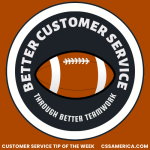
Mark Twain said “A letter written in passion is a mistake…It usually wrongs two persons, and always wrongs one – yourself.”
Twain is using the word “passion” to address anger, frustration – more negative emotions. And while letter-writing in the 21st century is seemingly falling by the wayside, we can apply his quote to e-mails – particularly business e-mails to customers and co-workers.
With this perspective in mind, here’s another Mark Twain quote: “When you get an exasperating letter, what happens? If you are young, you answer it promptly, instantly – and mail the thing you have written. At forty what do you do? By that time you have figured out that a letter written in passion is a mistake in ninety-nine cases out of a hundred.”
These statements were made 104 years ago, but they apply today. When putting something in writing and mailing (or pressing “send”), you can’t take it back. The message can be moved onto a social media post, into the newspaper, or into your supervisor’s inbox in a minute. Just as importantly, it can be taken to heart by the recipient immediately. And all of these results could result in your looking bad to customers, peers, supervisors, and the public at large.
Emotions and e-mail rarely mix well. They’re the oil and water of communications, and unless you’re exceptional at conveying your “passion” with the written word, consider a pause before pressing send. Consider having a dialogue with the other – a communication that enables tone and body language to be involved, hopefully positively.
Don’t wrong yourself. Pause before pressing send when passion is involved.
Signup for FREE Tips! Contact Us More Resources for You Visit Our Home Page























